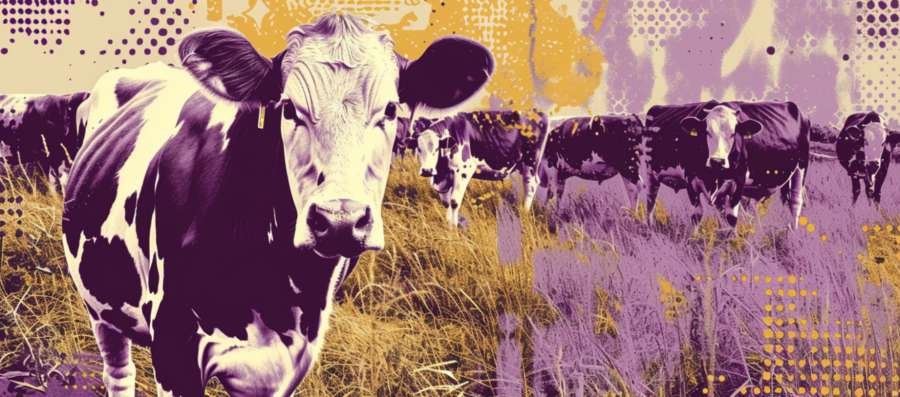Climate-Smart Agriculture: Feeding the Future

Planting Ideas in a Changing WorldImagine a world where farmers chat with their cows about the weather, and crops share gossip with the wind about which way the rain is falling. This whimsical image might not be too far from reality as we delve into the realm of climate-smart agriculture. It’s not just about planting seeds; it’s about planting ideas that might help save our planet while ensuring that our dinner plates stay full. In a time when climate change is throwing a temper tantrum like a toddler who just lost its candy, agriculture must adapt. Enter climate-smart agriculture—a strategy that’s as exciting as a surprise banana in your cereal. This approach focuses on three main objectives: increasing productivity, enhancing resilience to climate shocks, and reducing greenhouse gas emissions. Farmers everywhere are discovering that a little adaptation goes a long way—in both their fields and their futures.Feeding the Planet, One Crop at a TimeIf you think feeding the world is as easy as planting a few seeds and waiting for the magic to happen, you might want to reconsider your career choices. With a growing global population projected to reach nearly 10 billion by 2050, the pressure is on for agriculture to step up its game. Some innovative techniques are stepping into the spotlight, like precision farming, which is not nearly as complicated as it sounds. Imagine a farmer using GPS technology to plant crops in the exact right spots, like a game of agricultural chess. This method allows for the efficient use of resources, ensuring that every drop of water and every ounce of fertilizer counts.But wait, there’s more! Farmers are also turning to agroforestry, where they embrace the idea of trees joining the party among their crops. Trees can provide shade, enhance biodiversity, and even offer a home for squirrels who think they’re the kings of the garden. This multi-layered approach not only improves crop yields but also helps sequester carbon, which is basically nature’s way of giving us a high-five.Resilience: The Ultimate Crop SuperpowerWhat if crops could wear capes and fly in the face of adversity? While that’s technically still the stuff of cartoons, the concept of resilience is about as close as we can get. Climate-smart agriculture emphasizes the need for crops to withstand extreme weather events—think of it as giving them a workout so they can bench press hailstorms.Farmers are increasingly adopting drought-resistant varieties, which means they won’t have to water their plants as though they were preparing for a swimming competition. Not surprisingly, fewer water resources lead not only to heartier crops but also to happier farmers, who suddenly have more time to perfect their homemade bread recipes!Additionally, diversifying crops is another clever strategy. Instead of putting all your eggs in one basket (or all your carrots in one row), farmers are planting a variety of crops that can withstand different challenges. This makes their farms as versatile as an award-winning actor—it’s all about adapting to the role they need to play.Carbon Footprints and the Art of Emission ReductionReducing greenhouse gas emissions from agriculture is like taking off your shoes before walking through a muddy field—it’s a little annoying, but it helps keep the mess to a minimum. Agriculture, as you may know, contributes significantly to global emissions, so it’s time to roll up those proverbial sleeves and get serious.One way farmers are cutting back is by adopting better manure management practices. No, we’re not suggesting they start a perfume line called “Eau de Barnyard,” but rather, they’re finding ways to utilize animal waste more efficiently. This can include everything from composting to turning it into bioenergy, which is about as magical as turning water into wine, minus the miraculous backstory.Another approach is integrating livestock and crop production. Cows can graze on crop residues, while their digestive processes return nutrients to the soil. It’s like creating a tiny ecosystem right on the farm, where everyone plays a part in maintaining balance—like a soap opera, but without the dramatic plot twists.Harvesting a Brighter TomorrowWhile feeding the world might resemble a high-stakes game of Jenga, it’s clear that climate-smart agriculture is the solution we didn’t know we needed. It’s about preparing our fields for whatever climate curveballs come our way, ensuring nutritious food for generations to come, and maybe even turning a few cows into weather advisors along the way. When all is said and done, it’s not just about planting seeds; it’s about sowing the potential for a sustainable future that keeps both belly and planet happy. Let’s raise a toast—perhaps to a soup made from sustainably farmed carrots—to a future where agriculture and the environment can flourish together, much like a well-tended garden!
|
|







